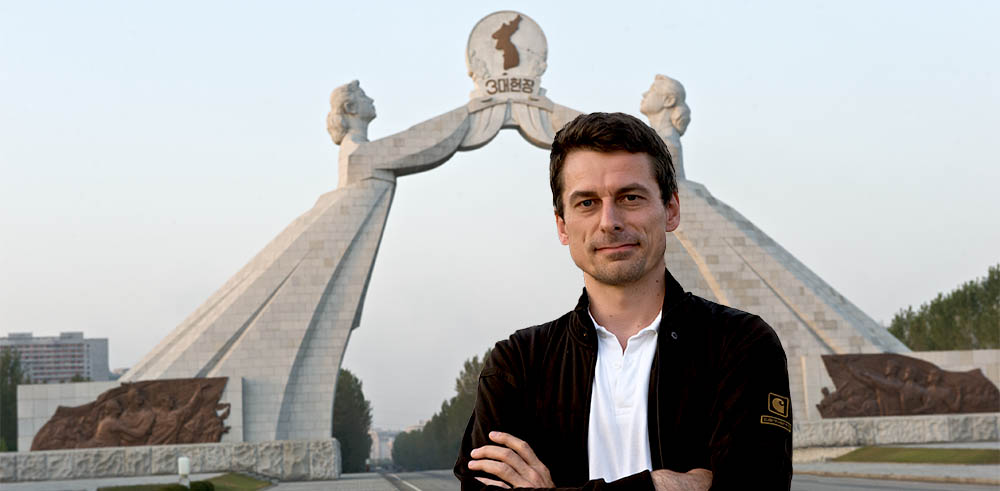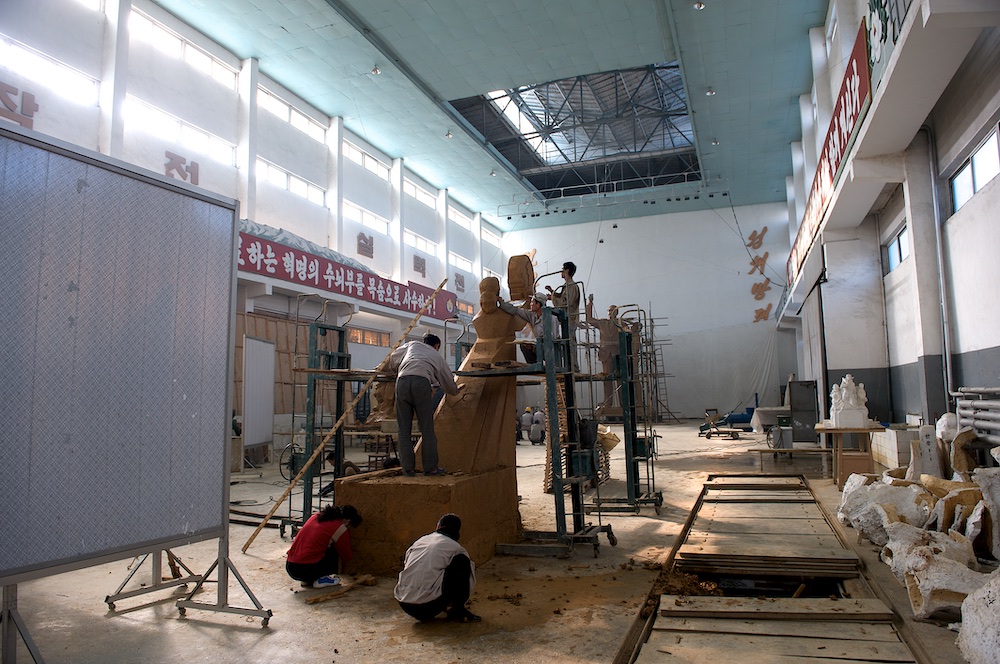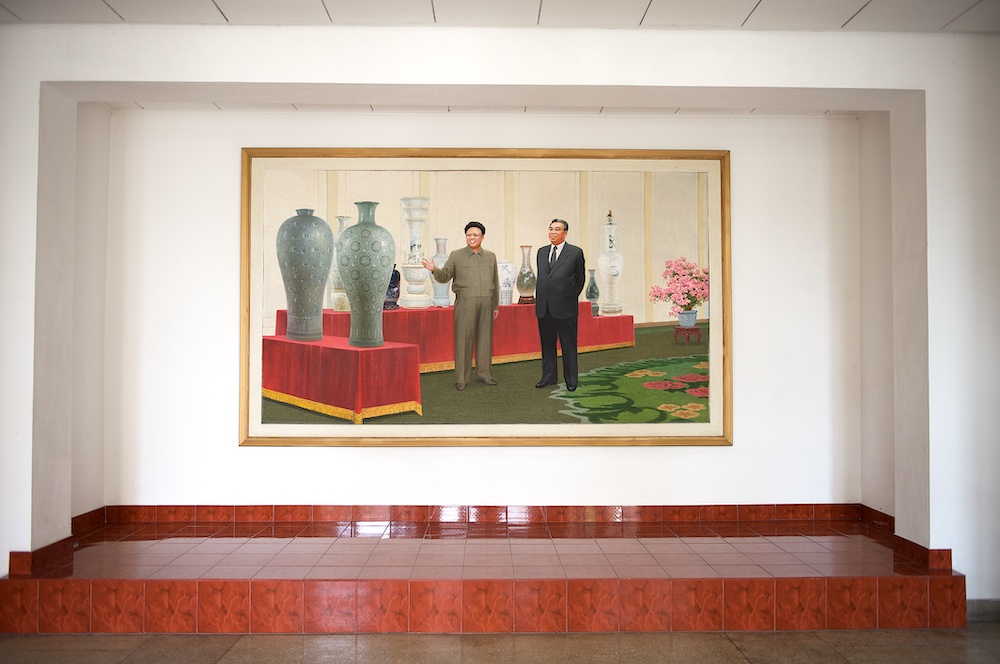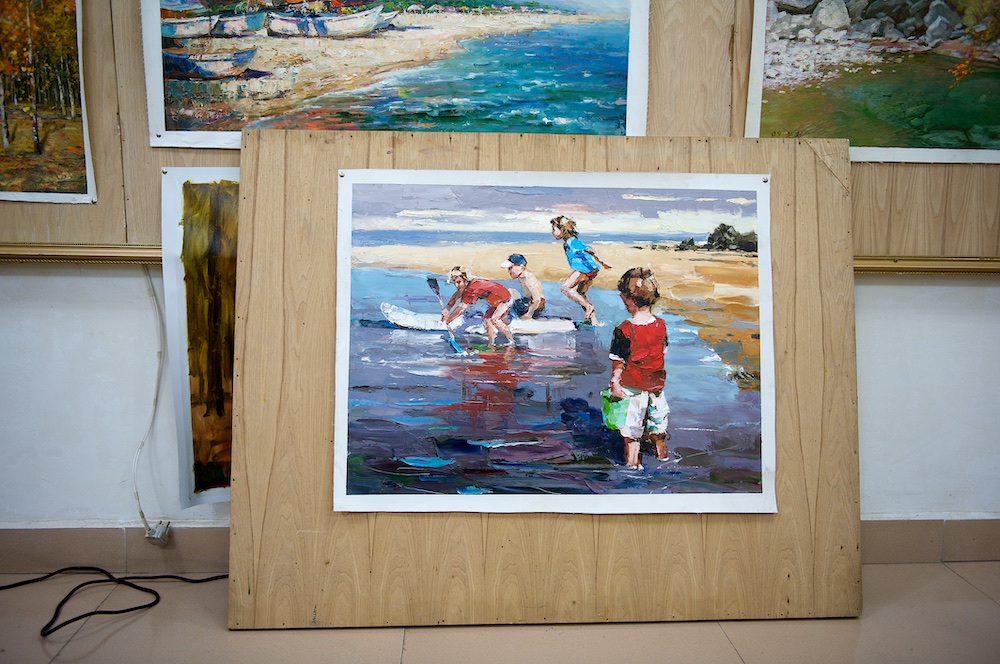Massgames pictures – exclusive edition
Now in an exclusive edition at Koryo Studio
Koryo Studio has made it its mission to distribute art from and about North Korea on its platform. The company around Nick Bonner is the only institution in the West that has managed to establish official relations with the legendary “Mansudae Studio” and to exhibit and sell works by North Korean artists.
I am very pleased that my Massgames paintings are now also being distributed via this platform. I have selected a series of 5 motifs for our collaboration, which are only available in this version exclusively through Koryo Studio.
You can find more about it here
If you would like to find out more about art in North Korea, I have put together a short article here:
One of North Korea’s few export hits – apart from a car called “Peace”, which is manufactured on behalf of South Korea, and an impressive arsenal of short and medium-range missiles, with which South Korea is regularly threatened – is art.
In North Korea, “art” is usually understood to mean the monotony of “socialist realism”, which is omnipresent here. Huge murals of the two “great leaders” Kim Il-sung and Kim Jong-il can be found throughout the entrance halls of public buildings. They are usually looking weightily into the distance or are busy with something to do with the public building, such as supervising the construction of the underground railway or visiting an agricultural collective farm. The huge and numerous bronze statues of the great leaders, which adorn all the important squares and are spread all over the country in incredible numbers, are particularly striking.
The largest of these statues at the time of my first visit was the Mansu Hill Grand Monument, which is over 20 metres high and has Kim Il Sung waving over Pyongyang with a sweeping gesture. This colossus of a statue stands in front of an equally huge museum that “protects” it to the rear and is flanked by two enormous stone flags. To visit it, you first have to climb a huge flight of steps and are accompanied throughout your visit by solemn marching music blaring from loudspeakers hidden in the bushes. A truly impressive production. Here, people are reduced to dwarf-like admirers. An effect that can be seen everywhere in North Korea.
Even more impressive than this staging, however, is the remodelling of the complex after Kim Jong-il’s death. The statue of Kim Il-sung was moved about 10 metres to the left to make room for a second statue of his son and successor Kim Jong-il. And North Korea would not be North Korea if they had left it at that. No, in the first version of the statue of Kim Jong-il, his typical jacket had turned out wrong. He was wearing a thin trench coat that was vaguely reminiscent of a work coat. Of course, this could not be allowed, so it was melted down again and replaced with a new statue, this time with a sturdy, thick winter jacket that is slightly inflated by the wind, so that it now looks much more dynamic despite its thickness. The last culture to go to such lengths to honour its leaders in monumental size was the ancient Egyptians.
All these works are carried out by the Mansudae Art Studio in Pyongyang and all kinds of amazing secrets are hidden behind its enormous walls. During my last visit to North Korea, I was finally able to visit the studio myself and was amazed: in a large hall, the dimensions of which were more reminiscent of a factory hall than an art studio, a huge colossal statue was being created, but not of one of the two Kims – but for an African ruler, quite obviously a commissioned work. Stylistically, however, they remained true to their socialist pomp and pathos – after all, they have a reputation to lose.
In the studios I was shown, however, I was surprised to find impressionist paintings of such beauty and lightness, alongside the expected pottery and classical Korean ink painting, that they took my breath away. I was not told for whom these pictures were painted, I just realised that no North Korean would ever get to see them. After all, a few years earlier I had had the dubious pleasure of being shown round the state art gallery, where exactly one type of painting was on display: Kim Il-sung in Socialist Realism. Sometimes with a far-reaching gaze over the beautiful landscapes of North Korea, sometimes with tractor drivers or peasant girls, alternatively writing, reading, governing, but always in the centre of the picture and always half a head taller than those around him. They were always clean, vigorous, cheerful and optimistic, gathered around their great leader.
There was not a single abstract painting in the entire museum, as if art history had simply come to a standstill sometime in the middle of the 19th century and Adolf Menzel, rather than the French Impressionists, had conquered the world with his painting. When I asked why no abstract paintings were on display, the museum director smiled and said “North Korean people don’t like abstract art”. Whether the “North Korean people” were asked, however, remains doubtful.
And now I was standing in this small studio in front of a young artist who didn’t speak a word of English but produced the most beautiful paintings I had seen in a long time. One can only hope that one day a wind will blow through these studios and blow a few sheets of his art production to the West.







